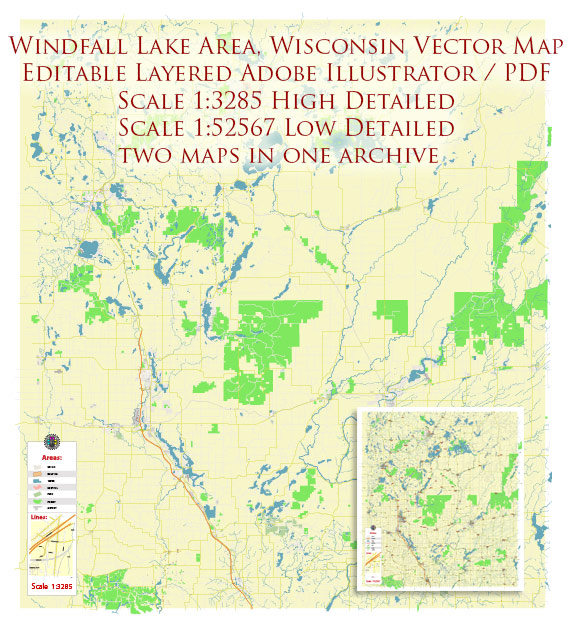Wisconsin, located in the upper Midwest of the United States, is characterized by diverse ecosystems that contribute to its overall biodiversity. The state features a mix of forests, lakes, wetlands, prairies, and agricultural lands, providing habitats for a wide variety of plant and animal species. Here are some key aspects of Wisconsin’s biodiversity:
- Forests: Northern hardwood forests dominate the northern part of the state, while oak and hickory forests are prevalent in the southern regions. These forests provide habitat for a diverse range of plant species, including various trees, shrubs, and wildflowers. Wildlife such as white-tailed deer, black bears, and a variety of bird species are commonly found in these areas.
- Lakes and Wetlands: Wisconsin is known for its numerous lakes, rivers, and wetlands. These aquatic environments support a rich diversity of fish species, including game fish like walleye, muskellunge, and northern pike. Wetlands are crucial for supporting amphibians, reptiles, waterfowl, and various plant species.
- Prairies: Historically, Wisconsin had extensive prairies, but much of this habitat has been converted to agriculture. Efforts are ongoing to restore and conserve remaining prairie remnants, which are home to unique plant species and important pollinators like butterflies and bees.
- Bird Diversity: Wisconsin is a haven for birdwatchers, with a variety of resident and migratory bird species. The state is home to raptors such as bald eagles and peregrine falcons, songbirds like warblers and orioles, and waterfowl that inhabit its lakes and wetlands.
- Endangered Species: Wisconsin is home to several species listed as endangered or threatened, including the gray wolf, eastern massasauga rattlesnake, and the Karner blue butterfly. Conservation efforts are in place to protect and recover these species.
- Agricultural Lands: Agriculture is a significant part of Wisconsin’s landscape. While agricultural activities can impact biodiversity, there are also efforts to implement sustainable farming practices that balance food production with conservation objectives.
- Conservation Initiatives: Wisconsin has numerous conservation programs and initiatives aimed at preserving and restoring natural habitats. The state’s Department of Natural Resources (DNR) plays a crucial role in managing and protecting the diverse ecosystems found within its borders.
It’s important to note that biodiversity can vary across different regions within the state, and ongoing conservation efforts are essential for maintaining and enhancing Wisconsin’s natural diversity. For the most up-to-date and detailed information, consulting resources from the Wisconsin Department of Natural Resources and other local conservation organizations is recommended.


 Author: Kirill Shrayber, Ph.D.
Author: Kirill Shrayber, Ph.D.